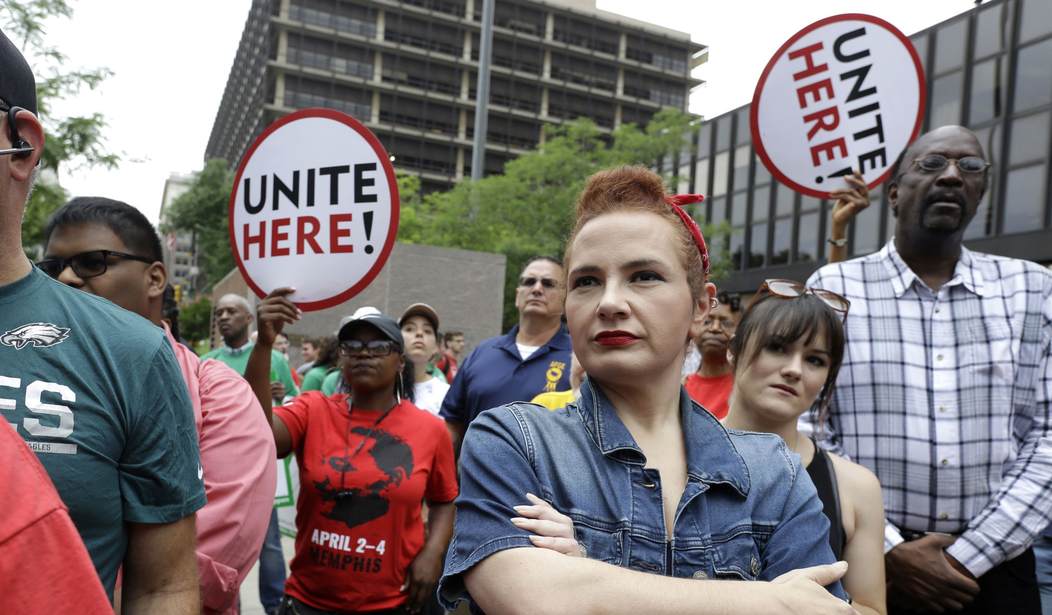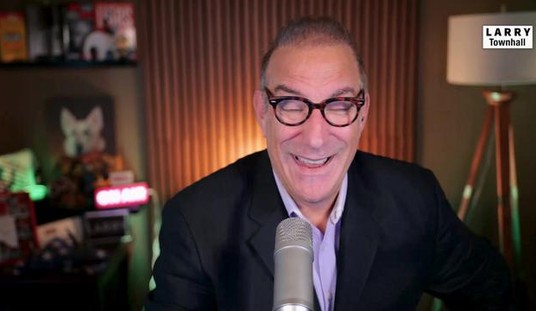After 33,000 unionized Boeing factory workers walked off the job on September 13, International Association of Machinists and Aerospace Workers President Brian Bryant dubbed the strike “a resounding victory for the entire aerospace industry and workers’ rights.”
This may be the case for Big Labor’s elite, but for workers and employers, work stoppages are a losing game.
Recent strikes against the likes of Boeing and AT&T are the latest in a series of walkouts that surged in 2023. Dubbed the “hot labor summer,” last year saw 470 work stoppages, involving over half a million workers, who missed out on a combined 25 million days of pay.
“Working people are standing up for our rights and fairness in the workplace at a rate not seen in generations,” gushed the American Federation of Labor and Congress of Industrial Organizations (AFL-CIO). “Striking,” the AFL-CIO continued, is “a critical part of the labor movement’s resurgence.”
Other union bigwigs insist that “the strike – or the threat of one – remains the single most powerful inducement to force employers to deal with the demands of workers.”
While walking out of the workplace may be a powerful bargaining chip for union negotiators, union members pay the price.
Work stoppages deal an immediate blow to workers who can no longer count on employer-provided pay and benefits. No problem, says union leadership, who often stockpiles a portion of members’ monthly dues within a strike fund to help members “recoup from financial hardship” caused by walkouts.
Recommended
Last year’s strike, which pitted the United Auto Workers (UAW) against Detroit’s largest auto manufactures, for example, cost 46,000 strikers a combined $488 million in lost wages.
Despite holding an $850 million strike fund, UAW left workers high and dry for eight days, offering members a weekly $500 stipend thereafter.
More often than not, strike fund payouts offer workers a fraction of their normal pay. And while some striking union members must resort to loans or credit card debt, most union leaders continue to rake in a full salary, averaging in the hundreds of thousands of dollars.
Beyond financial hardship, unions often fail to inform members that walkouts lead to layoffs. While most workers can’t be fired for picketing, companies have a right to hire striker replacements to keep business running in the meantime.
Even when a strike ends, replacement hires have a right to keep their new job. An employer’s only obligation to strikers is to offer “first dibs on any job that opens up in the following year.” But this is no guarantee.
Additional layoffs are sparked by the financial blow dealt to employers during a work stoppage. Last year’s collaborative strike joining the Screen Actor and Writer Guilds, for example, resulted in the loss of 45,000 Hollywood jobs.
Refusing to participate in a strike to avoid financial hardship and potential layoffs isn’t an option for union members.
While the terms of collective bargaining agreements vary, majority rules for most strike authorization votes. Dissenting members, unable or unwilling to join the picket line, are subject to union discipline, often involving significant fines or lawsuits.
The only way to avoid union retaliation is cancelling membership entirely.
Beyond the rank-and-file, consequences of union strikes impact consumers, too. Last year, the healthcare industry, for example, saw the largest work stoppage in United States history as 75,000 hospital employees across five states plus Washington, D.C. walked off the job.
As headlines continue to exaggerate the benefits of walkouts while embellishing “sweeping” unionization efforts among healthcare professionals, especially pharmacists, medical industry strikes would, presumably, pose no obvious harm to patients.
But studies show that healthcare industry strikes escalate in-hospital mortality rates by more than 18 percent and thirty-day re-admission by more than 5 percent. The threat of deadly repercussions provides further incentive for hospitals to abruptly replace striking union members.
Big Labor insists that a strike is a union’s “single most powerful” tool. But at what cost?
Certain scenarios, including unfair labor practices and lousy workplace conditions, warrant a walk out. But a strike to crutch a union negotiator’s inability to bargain a satisfactory contract regarding pay and benefits seems unjustifiable, considering the high risk, low reward posed to workers themselves plus the communities they serve.
While a strike may be Big Labor’s favorite bargaining chip, workers should remain skeptical, lest they become pawns in a union power play themselves.
Maddie Dermon is Director of Communications for the Freedom Foundation.

























Join the conversation as a VIP Member